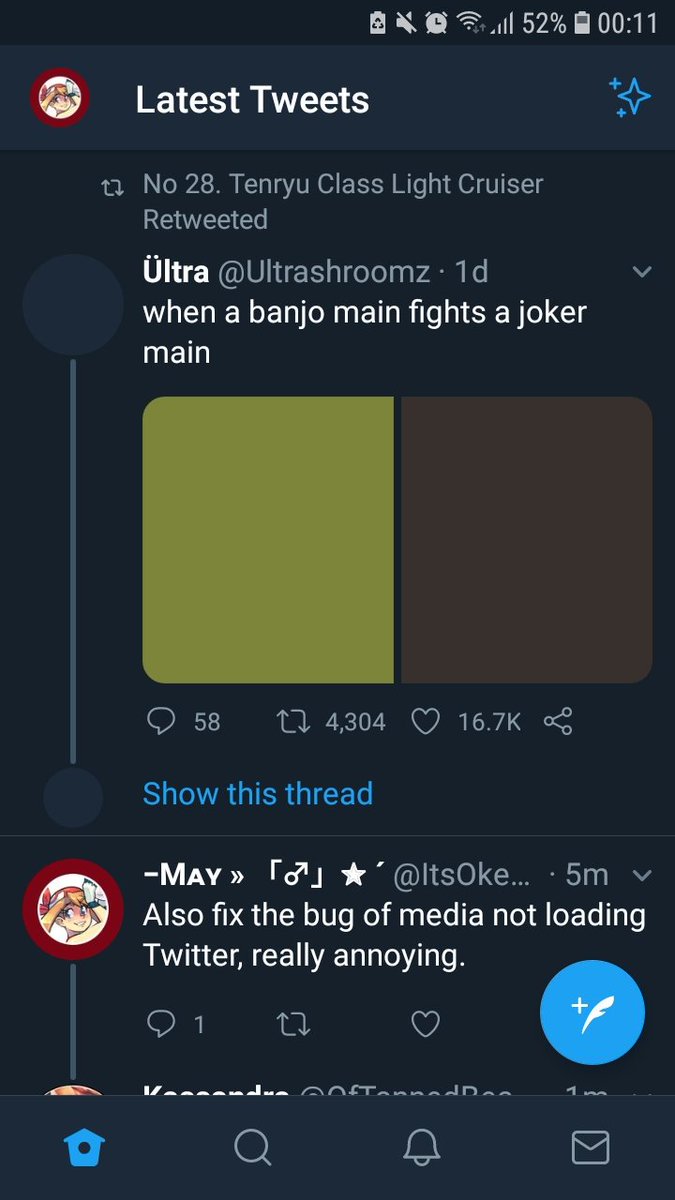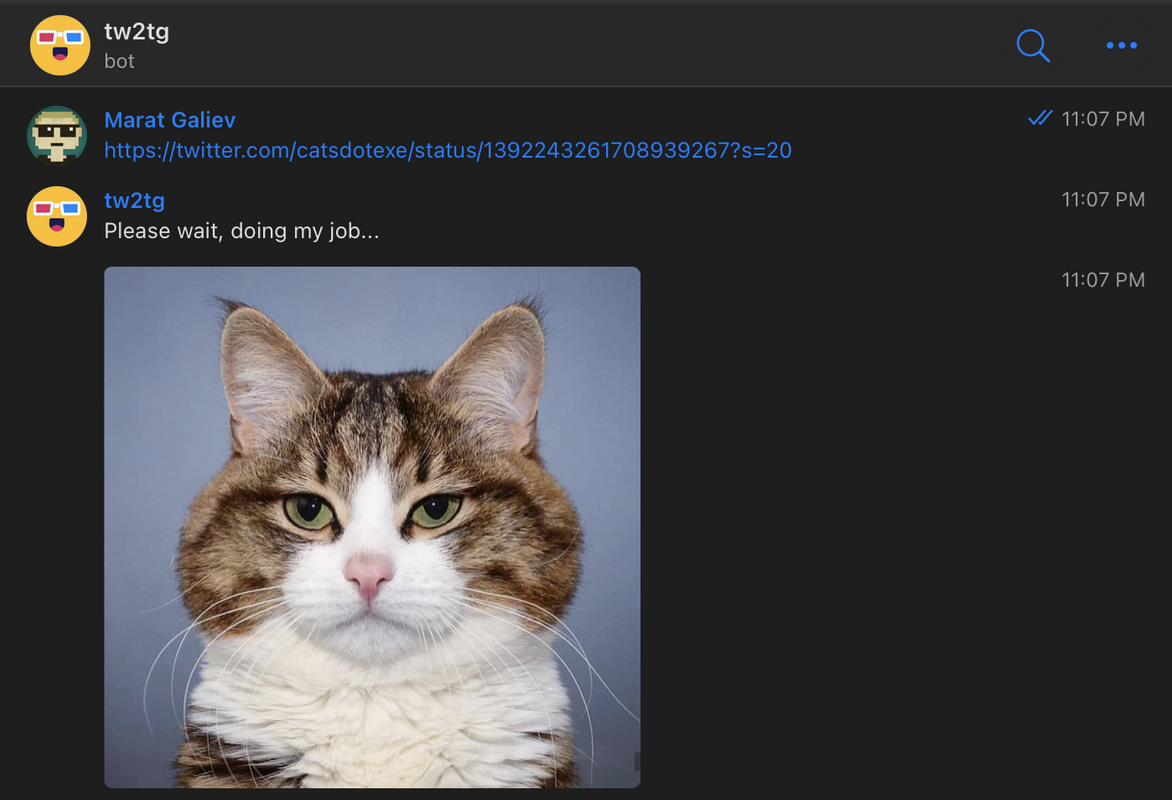Who needs these?
Sometimes you can be blocked from the internet access.
Sometimes your government (why not?) can slow down your CDN access on specific resources.
How about this?

What we can do? Maybe this simple ruby app can help you to get media file from Tweets.
Project link
Get source code easy: https://github.com/mg-ruby/tw2tg
How it works?

Implementation
Let’s initialize Twitter client first:
require_relative 'bot.rb'
require 'twitter'
client = Twitter::REST::Client.new do |config|
config.consumer_key = ENV['TW_KEY']
config.consumer_secret = ENV['TW_SECRET']
config.bearer_token = ENV['TW_TOKEN']
end
Bot.new(client)
And this is the main file for the redirect and Sinatra entry point.
Just simple redirect web app request to the Telegram bot link.
require 'sinatra'
get '/' do
redirect 'https://t.me/img2tgbot', 303
end
Stop number three: main app code, let’s see how it works.
So, we have 3 main flows: for photo, for video, for gif files.
We should provide special Tweet link to the bot to proceed.
You can see how it works in class constructor.
So, first part is a parsing and getting Tweet ID with get_tweet_id method.
After that, we’re using Twitter API to get Tweet information, and depending on the Tweet media type, we’re saving it to the temp file and just sending media to the Telegram Bot with API.
Simple? That’s super simple!
require 'telegram/bot'
require 'down'
class Bot
TOKEN = ENV['TG_BOT_SECRET']
MEDIA_TYPES = %(photo animated_gif video)
def save_to_tempfile(url)
::Down.download(url)
end
def get_tweet_id(tweet_url)
tweet_url&.split('/')[5] rescue nil
end
def send_bot_error(bot, message, text = "Invalid link, please provide valid direct Tweet URL")
bot.api.send_message(chat_id: message.chat.id, text: text)
end
def process_photo(media, bot, message)
url = media.media_url.to_s
tf = save_to_tempfile(url)
bot.api.send_photo(chat_id: message.chat.id, photo: Faraday::UploadIO.new(tf.path, 'image/jpeg'))
end
def process_animated_gif(media, bot, message)
url = media&.video_info.variants.first.url.to_s
tf = save_to_tempfile(url)
bot.api.send_animation(chat_id: message.chat.id, animation: Faraday::UploadIO.new(tf.path, 'image/gif'))
end
def process_video(media, bot, message)
url = media&.video_info.variants.first.url.to_s
tf = save_to_tempfile(url)
bot.api.send_video(chat_id: message.chat.id, video: Faraday::UploadIO.new(tf.path, 'video/mp4'))
end
def initialize(client)
Telegram::Bot::Client.run(TOKEN) do |bot|
bot.listen do |message|
case message.text
when /^https?:\/\/twitter\.com\/(?:#!\/)?(\w+)\/status(es)?\/(\d+)/
tid = get_tweet_id(message.text)
if tid
begin
status = client.status(tid, tweet_mode: 'extended')
bot.api.send_message(chat_id: message.chat.id, text: "Please wait, doing my job...", disable_web_page_preview: true)
status.media.each do |media|
if MEDIA_TYPES.include?(media.type)
case media.type
when 'photo'
process_photo(media, bot, message)
when 'animated_gif'
process_animated_gif(media, bot, message)
when 'video'
process_video(media, bot, message)
end
end
end
rescue Exception => e
send_bot_error(bot, message, "Tweet not found, please check your Tweet URL")
end
else
send_bot_error(bot, message)
end
else
send_bot_error(bot, message)
end
end
end
end
end
Hope that helps! Stay tuned.